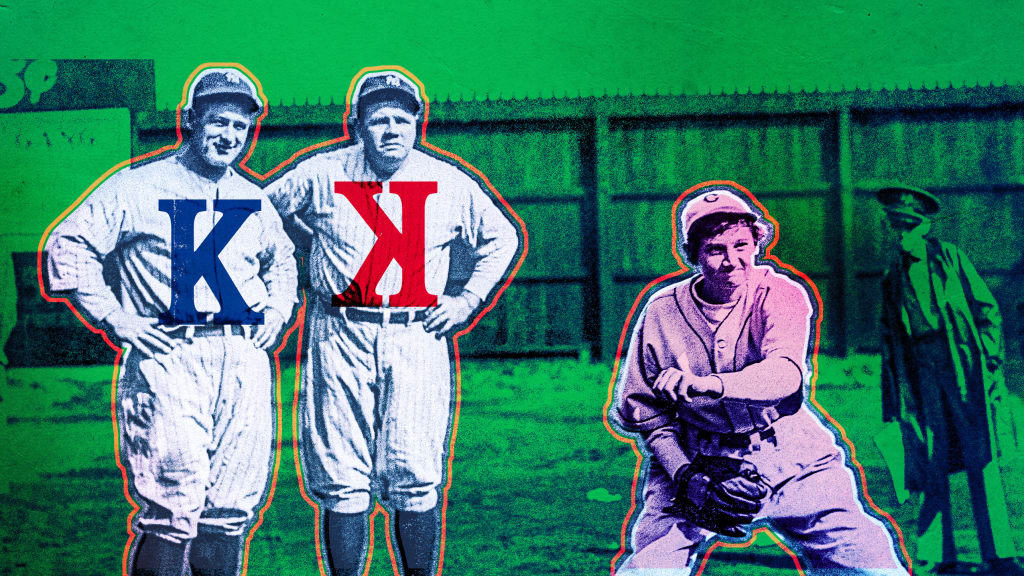
It shouldn't come as much of a shock to hear that baseball in 1931 was totally different from baseball today. Just from looking at pictures from the era, you can tell. Pitchers' windups are different. Hitters' swings are different. The uniforms look thicker and baggier.
But another way the game was different -- one you can't see by simply looking at a picture -- was the proliferation of barnstorming teams and exhibition games. In the offseason, some of the game's biggest names would join forces and form a sort of traveling baseball carnival, playing games and drawing crowds wherever they went. Most famous of these was the 1934 team that barnstormed around Japan, which included guys like Babe Ruth, Lou Gehrig and Jimmie Foxx.
The Chatanooga Lookouts weren't barnstormers -- they were a team in the Southern Association, a minor league in comparison to the National and American Leagues -- but thanks to owner Joe Engel, they embodied the barnstorming spirit as much as anyone else.
Engel took over the Lookouts just before the stock market crash of 1929, which immediately made it difficult to sell tickets. As an inventive and tireless promoter, however, Engel was as well-suited to that sort of environment as anyone.
The owner's stunts are likely worthy of a story all to themselves, but to say he was creative would likely be an understatement. He once sold a shortstop for a turkey and then served the turkey to local sportswriters. He raffled a house to a ticket holder at a random game. The ballpark hosted an elephant hunt where people dressed in safari gear chased others wearing papier-mâché elephant suits.

Compared to all that, what he did in the spring of 1931 wasn't far-fetched at all. With the Yankees scheduled to stop for an exhibition against the Lookouts on their way home from Spring Training on April 1, Engel signed a 17-year-old girl from Memphis named Jackie Mitchell to pitch to the powerful Yankees lineup. This made Mitchell one of the first women to sign a contract to play professional baseball -- the first known female player was Lizzie Arlington who signed to play with the Reading Coal Heavers of the Atlantic League in 1898.
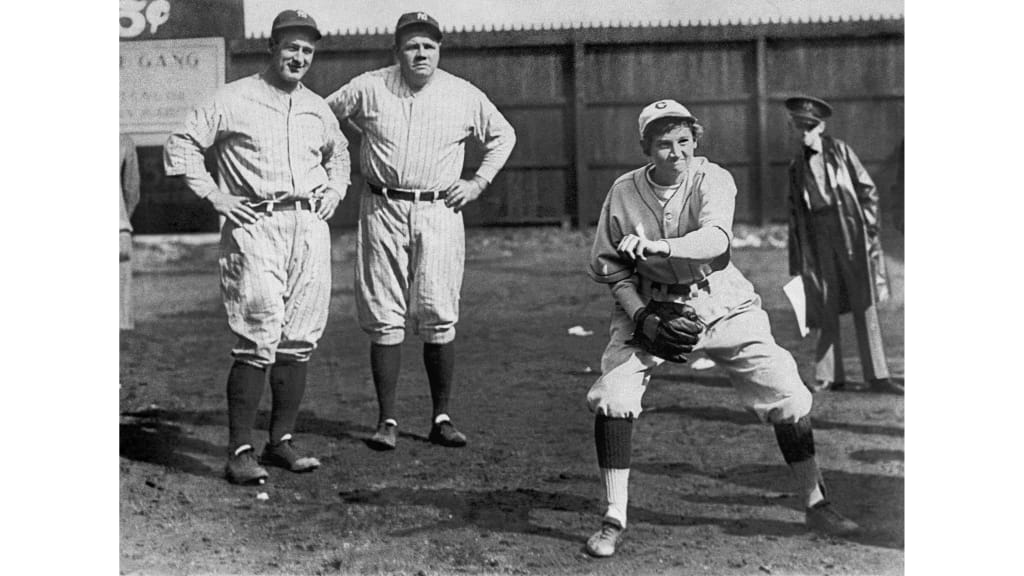
An ordinary 17-year-old would normally stand no chance against the likes of Ruth, Gehrig and Tony Lazzeri -- the heart of the Yankees' order at the time. Though Ruth was nearing the end of his career, he still hit 49 homers the previous season and Gehrig added 41 of his own. Lazzeri hit .303 on the year.
Mitchell wasn't an ordinary 17-year-old girl. For starters, she was an all-around athlete, splitting her time between basketball in the winter and baseball in the warmer months for Engel's all-girls team, the Engelettes. When Engel reached out to sign her to the Lookouts, she was in Dallas playing in a basketball tournament. With the chance to sign a professional baseball contract, she ditched that right away.
Like many young ballplayers, Mitchell learned her craft playing with her dad in the neighborhood park. But her neighborhood came with an advantage not exactly available to every young player. One of her neighbors in Memphis was none other than Dazzy Vance, the Hall of Fame pitcher who led the NL in strikeouts for seven seasons from 1922-28. From her neighbor, Mitchell learned how to throw a "drop ball," which we would call a sinker today.
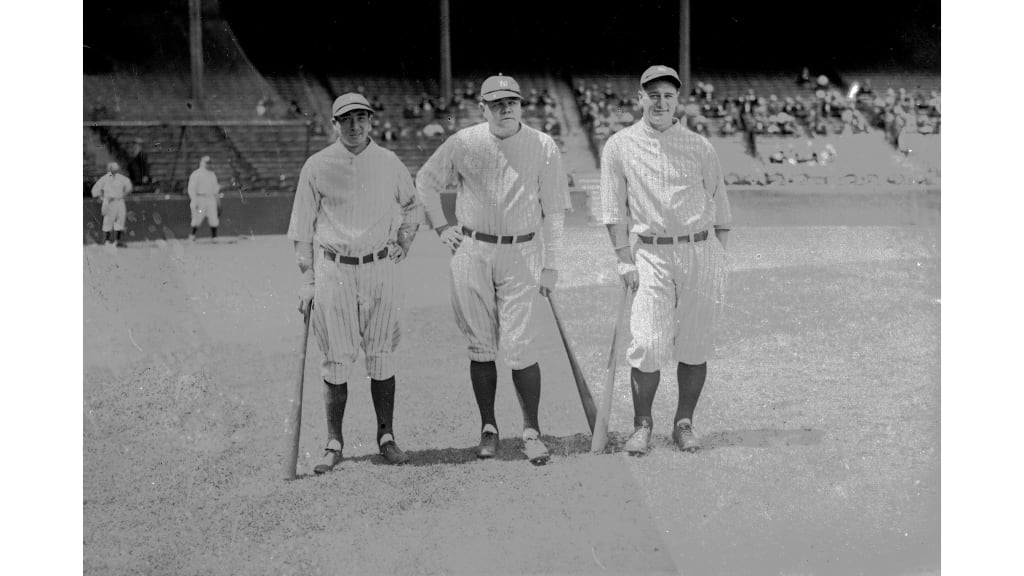
The anticipation of the Yankees facing this teenage girl generated considerable media coverage, little of which aged well. One paper described the looming showdown with little in the way of baseball discussion. "The curves won't be all on the ball when pretty Jackie Mitchell ... takes the mound," one wrote.
Another described the scene from a cosmetic rather than athletic perspective. "The bobbed haired pitcher pulled out her mirror and powder puff," it read, "and dusted the shine off her nose."
Even when the papers focused more on baseball, they couldn't help dabble in a bit of sexism. The New York Daily News noted she was a pitcher "who has a swell change of pace and swings a mean lipstick."
It's no wonder then that few were prepared for what would come next.
After starter Clyde Barfoot gave up a double and a single to start the game, the Lookouts went to the bullpen and brought in Mitchell. The first two batters up were none other than Ruth and Gehrig.
In front of 4,000 fans, Ruth tipped his hat to Mitchell and stepped in the box. She went into her left-handed sidearm delivery and delivered her drop ball, which missed the zone for a ball. Ruth swung and missed at the next two pitches before taking the next pitch on the outside corner that the umpire ruled a strike. The slugger threw his bat on the ground in disgust with the call, but facts were facts -- a 17-year-old girl just struck out the greatest hitter of all time.
Next up was Gehrig, who went down easier than Ruth. He swung and missed at all three pitches Mitchell threw him. After walking Lazzeri, the Lookouts went to the bullpen for the second time in the inning, ending Mitchell's historic outing. The Yankees would go on to win, 14-4.
The New York Times led the next day's sports page with the headline, "Ruth and Gehrig Struck Out by Girl Pitcher." The section also featured an editorial that concluded, “the prospect grows gloomier for misogynists.” To add to the magnitude of Mitchell's accomplishment, Ruth and Gehrig went on to hit over .340 with 46 homers a piece in 1931.
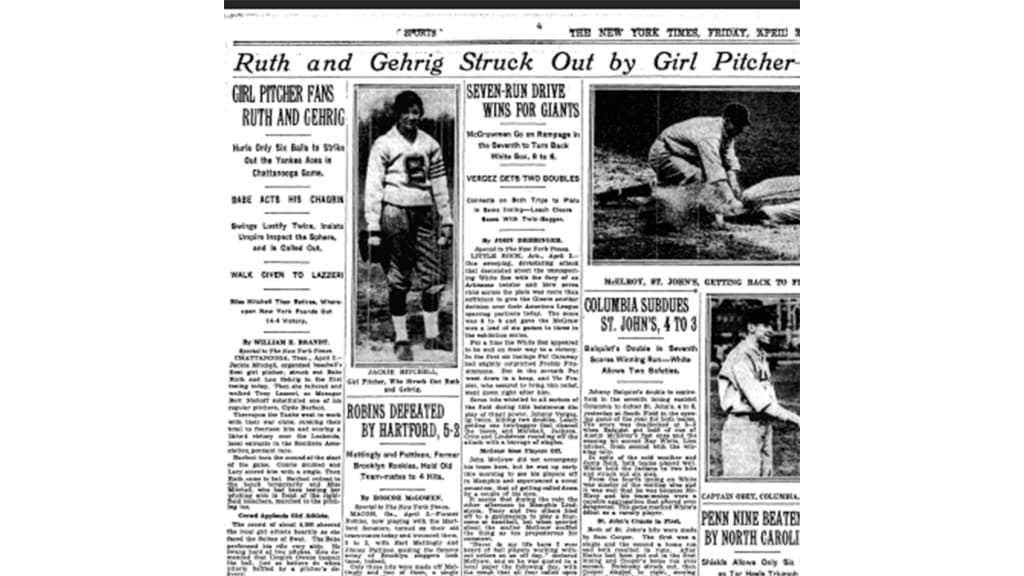
The misogynists -- or at least Mitchell's detractors -- had their day nonetheless. Elsewhere in The Times, it was written that Ruth "performed his role very ably" by striking out and that Gehrig "took three hefty swings as his contribution to the occasion," the occasion implied being yet another promotional stunt from Engel in which the sluggers allowed Mitchell to strike them out. The fact that it was originally scheduled for April Fools' Day was another data point cited against the authenticity of Mitchell's feat.
If Gehrig or Ruth did strike out on purpose, neither owned up to it in subsequent years. While it would surprise no one if Ruth were in on such a setup, it would be out of character for Gehrig. Given Mitchell's tutelage from Vance and the fact that her sidearm lefty delivery gave her the platoon advantage against both sluggers, it's not a huge stretch that she struck them out on merit.
But, if you really want an answer, there may be few better people to ask than Mitchell. Not only did she believe she struck them out fair and square, but she threw some shade on the Hall of Famers for good measure. “Why, hell, they were trying, damn right,” she said in 1987. “Hell, better hitters than them couldn’t hit me. Why should they’ve been any different?”
It was widely reported that baseball commissioner Kenesaw Mountain Landis voided Mitchell's contract in the aftermath of the game, citing that baseball was too strenuous for women. Though there is no proof of this, it wouldn't exactly be out of character for Landis.
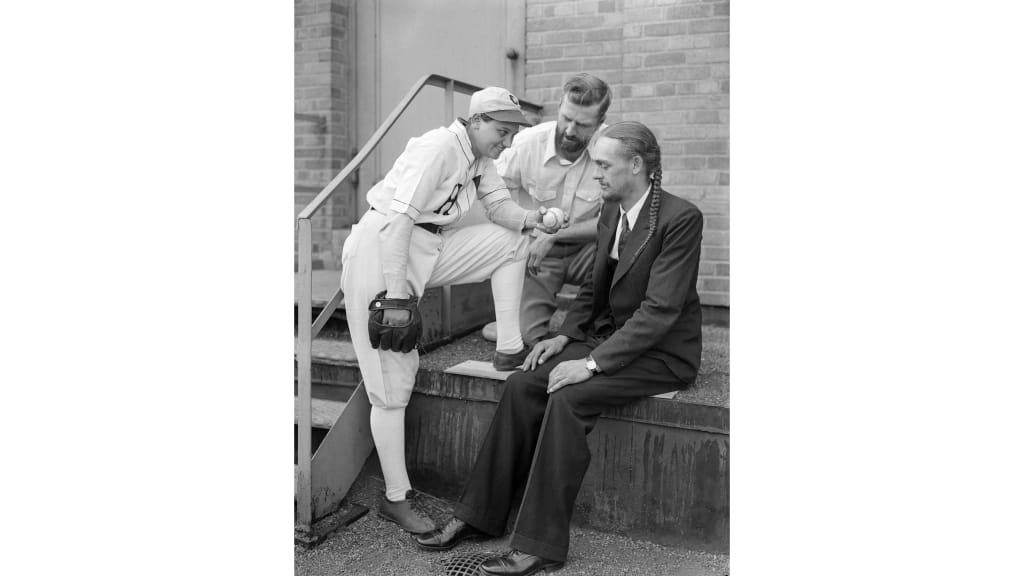
Without a professional career to turn to, Mitchell hit the barnstorming circuit with a squad called House of David. The Michigan-based religious colony advocated physical fitness among its members, leading to a successful baseball team. As part of their beliefs, all players had shoulder-length hair and beards.
In 1933, House of David reached outside their community to sign Mitchell, then 19 years old, who they were familiar with through interactions in amateur ball. Aside from appearing in a game against the Cardinals, there's not much of a record of her time with House of David.
Apparently, Mitchell wasn't enamored with the barnstorming style of baseball. She allegedly grew tired of the team's on-field antics, including playing games while riding donkeys. In 1937, she retired and moved back home to join her father's optometry office back in Chattanooga.
Mitchell's career, especially in the professional ranks, may not have been as long as she hoped when Engel first offered her a contract in 1931. But, in terms of what one can accomplish from facing three batters, striking out two Hall of Fame sluggers is about as good as it gets.
